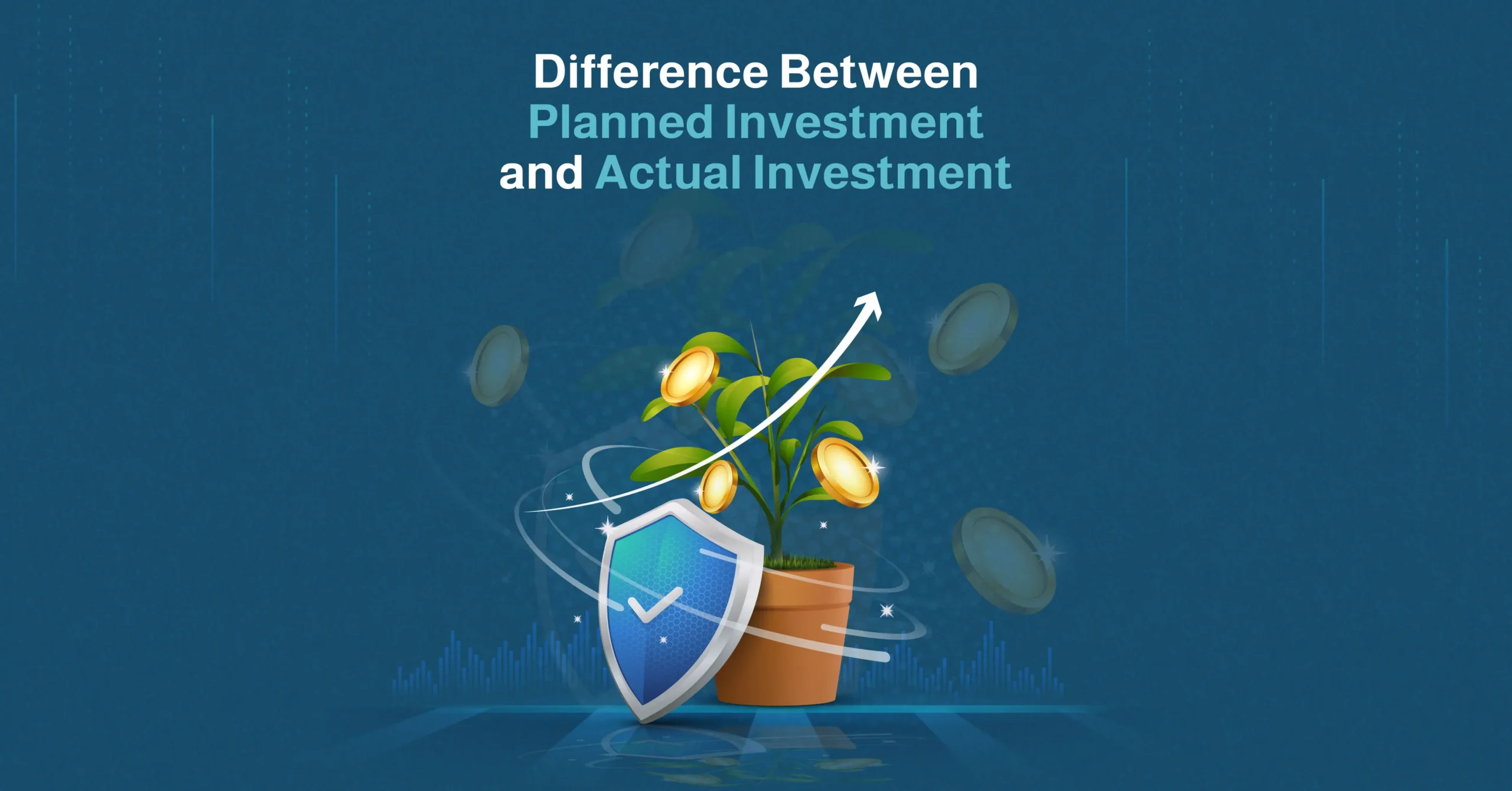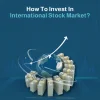“The best laid plans of mice and men often go awry,” John Steinbeck. You can spend weeks mapping out the perfect investment strategy, which aligns with your goals and matches your objectives to a tee, but in reality, investments never stick to the plan. Whether you are managing your personal finances, running a business, or planning a national policy, there is often a gap between what you expect to invest and what you actually end up investing.
We will examine the differences between planned investment and actual investment to understand why this gap occurs, what it means, and how to address it. It is a common phenomenon that can affect anyone, from students facing unexpected fees, businesses with unsold stock, or government overspending.
An accurate forecast is harder than ever with global reduced GDP rates, policy shifts, and rising costs. The OECD (Organization for Economic Co-operation and Development) projects a 3% slowdown in growth for 2025. There are similar warnings from the IMF (International Monetary Fund) and EY(Ernst & Young).
We would like to take a closer look at why these mismatches happen and how to manage them, as well as looking at how platforms like Gamma Assets can help close the gap.
More topics can be read on the Gamma blog
What is planned investment vs. actual investment?
Intention versus outcome is at the heart of the difference between planned investment and actual investment .
Let’s take a look at planned investment first. This refers to the amount that the investors, businesses, or government had intended to invest over a specific period. This specific amount will be determined by projections, forecasts, goals, and strategic plans, which may include expansions or upgrades to infrastructure, or building a personal stock portfolio. This type of investment is focused on the future and budgeted; it can be guided by expectations around demand, profitability, or market growth.
Then there is an actual investment, which is the capital that is actually spent or invested once all the variables have played out. The actual investment includes both the planned spending and any unplanned changes that may occur. These could include delays, cost overruns, or surprise events. This is reflective of real-world outcomes such as overruns and unsold goods, emergency spending, or other events due to economic uncertainty.
Let’s take a look at an example of this. In this example, we will be a clothing brand that has just invested $100,000 into the production of its summer collection. The $100,000 is the planned investment. Summer has arrived, and the demand for summer wear falls dramatically and unexpectedly. We are left with $30,000 worth of unsold stock. From an economic standpoint, this inventory still forms part of the actual investment, even though it wasn’t part of the plan. Meaning the company’s actual investment rises, but not in the way we had expected.
This logic applies at a macro level; governments might budget for infrastructure improvements, but should inflation spike or policy change affect the timeline, the final amount spent can be very different from the planned budget.
To accurately forecast, ensure financial health, and to be able to set realistic expectations, it is crucial to understand the difference between planned investment and actual investment. It shows how unpredictable factors such as market behavior, inflation, or even consumer sentiment can change and shape well-thought-out plans.
Why actual investment often diverges from what was planned
As we are learning, even the best, well-thought-out plans can go astray, but why this happens is a question we should be asking.
There is not one single reason why this might happen; the difference between planned investment and actual investment is often due to uncertainty. Being able to predict the future is a skill humans have yet to perfect, meaning that even well-informed decisions are susceptible to change. We will have a look at some of the common reasons the figures may not match.
-
Unexpected costs
Pricing may have increased for materials, rent, or labor. If you have budgeted a set amount for a project, inflation could add an additional 20% over and above your budget. Your actual investment is higher than planned.
-
Delays or disruptions
These can come from anywhere: supply chain issues, strikes, weather events, or even global events, as we saw in 2019 with the pandemic, can slow processes down or even force changes, which can either reduce your actual investment if the project pauses, or add to it, if extra costs are incurred.
-
Market changes
A start-up company may spend money on advertising only to realise demand has dropped halfway through a campaign, instead of flogging a dead horse, so to speak. Funding may be cut to avoid waste. In such a case, the actual investment will be lower than the planned investment.
-
Inventory build-up
A company can end up with unsold goods if they have produced more than the current demand. This would not have been part of the plan, and the cost of producing those goods still counts as part of the actual investment.
-
Emotional or behavioural decisions
Companies and individuals often act out of fear or excitement. An investor may panic-sell in a downturn or over-invest in a moment of excitement or trend, which could lead to unplanned shifts.
Plans are just that, plans, likely to change or evolve, while they may be based on the best information at the time. Economies, markets, and people are ever-changing, which is why the difference between planned investment and actual investments is so common, and why it is important to be adaptable.
How unplanned spending (like inventory) creates the gap
Inventory is one of the main culprits responsible for the difference between planned investment and actual investment. Products have been made but have not been sold.
A business might plan to produce 10,000 items with the expectation that they would sell them all. The costs the business incurs in manufacturing the goods form part of its planned investment. If 7,000 of the items sell, and the company is left with 3,000, these 3,000 will count as unsold inventory, which is still factored into the actual investment in economics. We can consider these unsold items as current assets for the company holding future economic value.
The company did not intend to invest in excess stock, but the money has been spent. The unsold goods will sit in storage, tying up capital and resources. Over-ordering is common for retailers during the holiday season, as the demand decreases, the retailers are left with boxes of unsold goods. A farmer may harvest more than the market needs, or a manufacturer builds up stock ahead of a product launch, and it underperforms.
In each case, the businesses’ plans made sense at the time. Changes occur, like slower demand, price shifts, or delays, and the outcome can look rather different. Unplanned inventory does not mean failure; it shows how actual investment can drift from the planned investment or what was expected. This is why it is important to plan with flexibility and try to build in room for these unexpected outcomes.
Why understanding this gap matters when managing your money
How you manage money, make decisions, and respond to financial decisions can be improved with a good understanding of the differences between planned investment and actual investment.
| Why it matters | What it means for you |
| Avoid budget blowouts | Overspending can occur if you have not built in a buffer. It is wise to expect some deviation. |
| Improve your forecasts | You can learn a lot from comparing your plans to the actual outcomes. This will show you where your planning went awry and how you can adjust next time. |
| See your real financial position | If you are only looking at the planned spending, you are likely to be misled; actual investment is more reflective of what is really happening within your business. |
| Build resilience into your strategy | It is important to accept that change is a very real part of the process. With that knowledge, you are likely to remain calm, adapt, and protect your goals. |
This information is not just relevant to investors but to everyone. Students learning to budget for the first time, to startups trying to scale, and even governments managing infrastructure. If capital is involved, plan and reality rarely match perfectly, and awareness allows prompt reactions.
Smart tools and strategies to help stick to your plan
While it is normal for there to be a discrepancy between the planned investment and the actual investment, smart habits can help keep things on track.
-
- Review and adjust regularly; plans aren’t set in stone, check your progress regularly, and pivot when needed. This is especially important if goals or costs change.
- Track planned vs. actual; something as simple as a spreadsheet can work wonders to compare what you intended to invest with what actually occurred. This is great for pattern recognition and early course correction.
- Set a buffer; leaving room for the unexpected is a wise move. Whether that be extra inventory, delayed income, or rising costs. Even a 10-15% contingency can make all the difference.
- Diversify where possible; do not put all your eggs in one investment basket. This is incredibly risky; rather, spread your investments over several asset classes.
- Use reliable platforms; While you may have planned your actual investment may differ, using platforms like Gamma Assets helps reduce unpredictability. Gamma Assets has real-world, asset-backed opportunities, and investors gain more transparency, control, and stability.
While planning is vital in your investment journey, so is leaving some wiggle room for reality and changing investment environments. This makes you a smart investor. The difference between planned investment and actual investment shows up in every sector. The difference is not always a sign of failure, but should be monitored, treated as a lesson, and planned for.
Recognising the gap early, you can build better forecasts, reduce risks, and adapt in capricious conditions. By using tools, even simple ones like spreadsheets, good habits, or trusted platforms, you can narrow the gap between planned investment and actual investment, making decisions that will serve u in the long run.
You can start investing now from the Gamma Asset Investment Platform
FAQ
What is the difference between planned and unplanned investment?
Planned investment is intentional and budgeted. Unplanned investment includes things like leftover inventory or emergency costs, spending that wasn’t expected but still occurred.
Can planned investment be adjusted during a financial cycle?
Yes. Smart investors revisit and update their plans regularly based on performance, market shifts, or new goals.
Why does this matter for personal or national budgets?
Tracking the gap helps prevent overspending, improves forecasts, and leads to more stable financial outcomes at every level.













